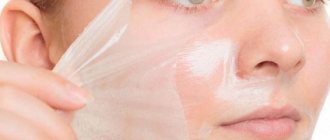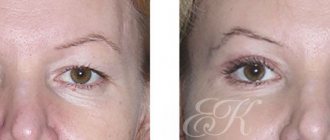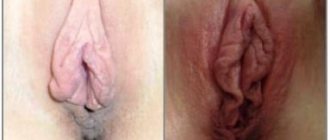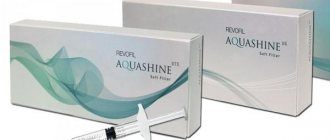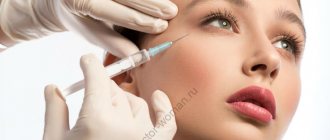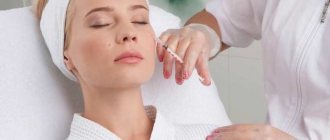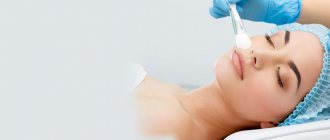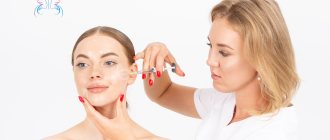The moment has come when you want to “shed your old skin” and appear before the world young and well-groomed, as in the best years of your life. You go to a cosmetologist for a chemical peel with trepidation. It doesn’t matter which one: superficial, middle or deep. The result will be the same - rejuvenated, smooth and beautiful facial skin! But to reach the final destination, you need to go through the procedure itself and the recovery period. How comfortable it will be depends on your actions. And to make the process as effective as possible, we have collected for you effective tips for caring for your skin at home after peeling.
What happens to the skin during laser peeling
Laser peeling can be hot or cold. During the cold peeling procedure, the laser beam hits only the deep layers of the skin without damaging the epidermis. This way there is no open wound on the face and the risk of infection is eliminated.
During cold laser peeling, an area of traumatized skin is formed in the areas where the laser is pinpointed. There the recovery process begins immediately.
Read also: Wrinkles near the ears
Hot FT-lifting intensively warms up all layers of the skin and initiates the activation of metabolic processes in the skin. The carbon laser completely destroys the skin at the point of its impact. The entire face is covered with such pinpoint wounds. At the site of damage, cells begin to actively recover and divide, and this causes a lifting effect.
Skin care after laser peeling
A day after the end of the session, you will feel a raw pain and burning sensation in the treatment area. To minimize discomfort, you can use painkillers and sedatives.
After a day or two, a film will begin to form on the skin, and a brown tint may appear. Then this condition is replaced by abundant exfoliation. Swelling and redness gradually decrease over 10 days.
Immediately after the procedure, you should begin using restorative anti-burn agents. They must be applied every three hours. These are foams and gels based on panthenol. Antimicrobial drugs are also indicated - chlorhexidine and miramistin.
After each type of peeling, there may be certain expected consequences. Before you put yourself in the hands of a cosmetologist, they need to be discussed and remembered. And if suddenly something goes “not according to the script,” then you need to immediately call or run to the doctor so as not to start the problem.
Recommendations from cosmetologists
How to get rid of peeling after peeling? After all, it is after this integral stage of exfoliation that the skin acquires an even tone and a fresh, well-groomed appearance. This period usually occurs towards the end of the first week after peeling, depending on the type of product used.
To facilitate and speed up the skin renewal process, you should listen to the recommendations of leading cosmetologists:
- For the first 24 hours after cleansing, it is forbidden to wash your face or even touch or rub your face.
- The final stage of exfoliation is the application of a special product. This procedure is done after peelings to speed up peeling, protect and regenerate the skin. This stain cannot be washed off. After a day, the skin becomes dry and tight. Now you can use the cleanser.
- It is strictly forbidden to sunbathe, and you cannot visit the solarium for the first time after peeling. Failure to follow this recommendation may result in hyperpigmentation and irritation.
Following all the cosmetologist’s recommendations will help the skin exfoliate better and faster after peeling.
Side effects
In some cases, the peeling procedure can cause complications and side effects. This happens for the following reasons:
- Wrong choice of peeling.
- Unaccounted for contraindications to the procedure.
- Failure to comply with the recommendations of the rehabilitation period.
Atypical post-pilling manifestations include:
- Hyperemia. After peeling, the skin almost always turns red. But if after a long time the redness does not go away and the face, on the contrary, takes on a bright crimson hue, this is a cause for concern. Sometimes the situation can transform into erythema - abnormal redness of the skin, requiring specialist intervention.
- Water bubbles. Considered a sign of a violation of the exfoliation procedure protocol. Most likely, the peeling concentration was exceeded, which caused a thermal or chemical burn. Ignoring this symptom can lead to the appearance of age spots and scars.
- Allergy. Swelling, redness and irritation that do not go away from the face for a long time after peeling are signs of a severe allergic reaction. To avoid such a problem after exfoliation, it is worth using anti-allergenic cosmetics (this is especially true for those with sensitive skin).
- Hyperpigmentation. Exposure to ultraviolet radiation negatively affects renewed integuments. Its protective functions have not yet been fully restored, so most peelings are carried out between October and February, when solar activity is minimal. In addition, sunscreen should not be removed from post-peeling care.
- Residual scars, scars. They are the result of violation of hygiene rules in the post-peeling period. Most often this happens when dried crusts that have formed on the face after exfoliation are picked off. This is strictly forbidden - on the 7th day the crusts usually disappear on their own.
Advice. If several days have passed after peeling, and redness, swelling and other unpleasant symptoms do not seem to go away, you need to entrust the solution to the problem to a cosmetologist. The specialist will determine the cause of the complications that have arisen and prescribe the correct therapy.
Retinoic peeling: contraindications.
- Allergic reactions of any origin, because retinol increases the sensitivity of the skin and can cause an attack;
- eczema, seborrheic dermatitis, atopic skin reactions;
- herpetic rashes
- increased photosensitivity of the skin;
- taking systemic retinoids
- external use of retinol derivatives to avoid hyperreaction;
- liver diseases (including past hepatitis);
- pregnancy (including planning) and the period of breastfeeding.
Attention!
Smoking dramatically reduces the anti-aging effect!
How does the Mediderma retinoic peel procedure work?
The methodology and rehabilitation period of peeling differ significantly from classic yellow peelings:
Firstly, before applying the peeling itself, apply the 3-vitC System ampoule to cleansed and oil-free facial skin
Secondly, we apply the actual peeling, which ATTENTION!!! does not have a poisonous yellow color due to the fact that the active components are presented in liposome form. As a result, you won’t have to “scare” others with your unusual complexion.
And finally, thirdly - again thanks to the “miracle liposomes”, the tolerance of peeling increases, the protective function of the skin is enhanced, and side effects such as dryness, redness and peeling are minimized. The risk of developing retinoic dermatitis is minimized. Therefore, there will be no significant separation from everyday life.
How to care for your skin after peeling?
A flaky, red and swollen face is not the most aesthetically pleasing sight. With such a “picture” few people will risk showing themselves to others. On the other hand, not every girl can afford to sit at home all day, hiding from prying eyes. How to speed up peeling after peeling and restore normal facial condition? To do this, it is recommended to follow a number of tips during post-peeling care:
- Do not rip off crusts and flaps of skin. They must certainly come off and fall off on their own. Otherwise, scars may remain on the skin, and it is very easy for the wounds to become infected.
- Another “no” in the post-peeling period is the use of scrubs, alcohol lotions or other cosmetics that provoke intense peeling.
- You should wash your face with thermal or mineral (still) water. Some cosmetologists advise adding a few drops of lemon juice to it.
- Daily application of a rich cream to your face before going to bed will help remove peeling from peeling.
- Before going outside, you need to apply sunscreen with a high level of SP filter to your face. You can wear a wide-brimmed hat.
- After peeling, you can get rid of peeling by regularly using Panthenol or other ointments with a wound-healing effect.
Types of almond peeling
By structure:
- Gel - for gentle and uniform distribution of the product.
- Hydroalcoholic - for effective exfoliation and cellular renewal.
By number of components:
- Monopilling - only mandelic acid is included in a concentration of 10-60% with a pH of 1.5-2.1.
- Combined exfoliation - additionally contains other types of acids for a deeper effect and prolongation of the result. For example, lemon, salicylic, apple, milk.
By age:
- Up to 25 years - to improve the visual condition and quality of oily skin.
- 25-30 years - to stimulate skin resources.
- 30-45 years - for prevention and reduction of age-related changes.
- 45-60 years - preparatory procedures for invasive correction of deficiencies.
Causes of peeling
Peeling after peeling is a natural reaction of the skin to a cosmetic procedure. The symptom indicates that exfoliation has been performed correctly and the process of skin cell regeneration has begun.
Aggressive substances, when exposed to the upper layer of the dermis, almost completely remove it, promoting the appearance of new, healthy cells. With superficial peeling, peeling is less pronounced than with medium or deep peeling.
Only with some types of peelings is there practically no peeling observed.
Most often, there is still peeling and this is absolutely normal. However, if redness, rash or other symptoms are added to it, then you should consult a doctor.
Dermatovenerologist, cosmetologist
Zhikhoreva Inna Viktorovna
6 years experience
